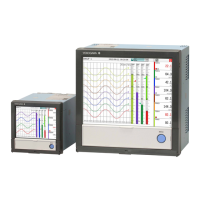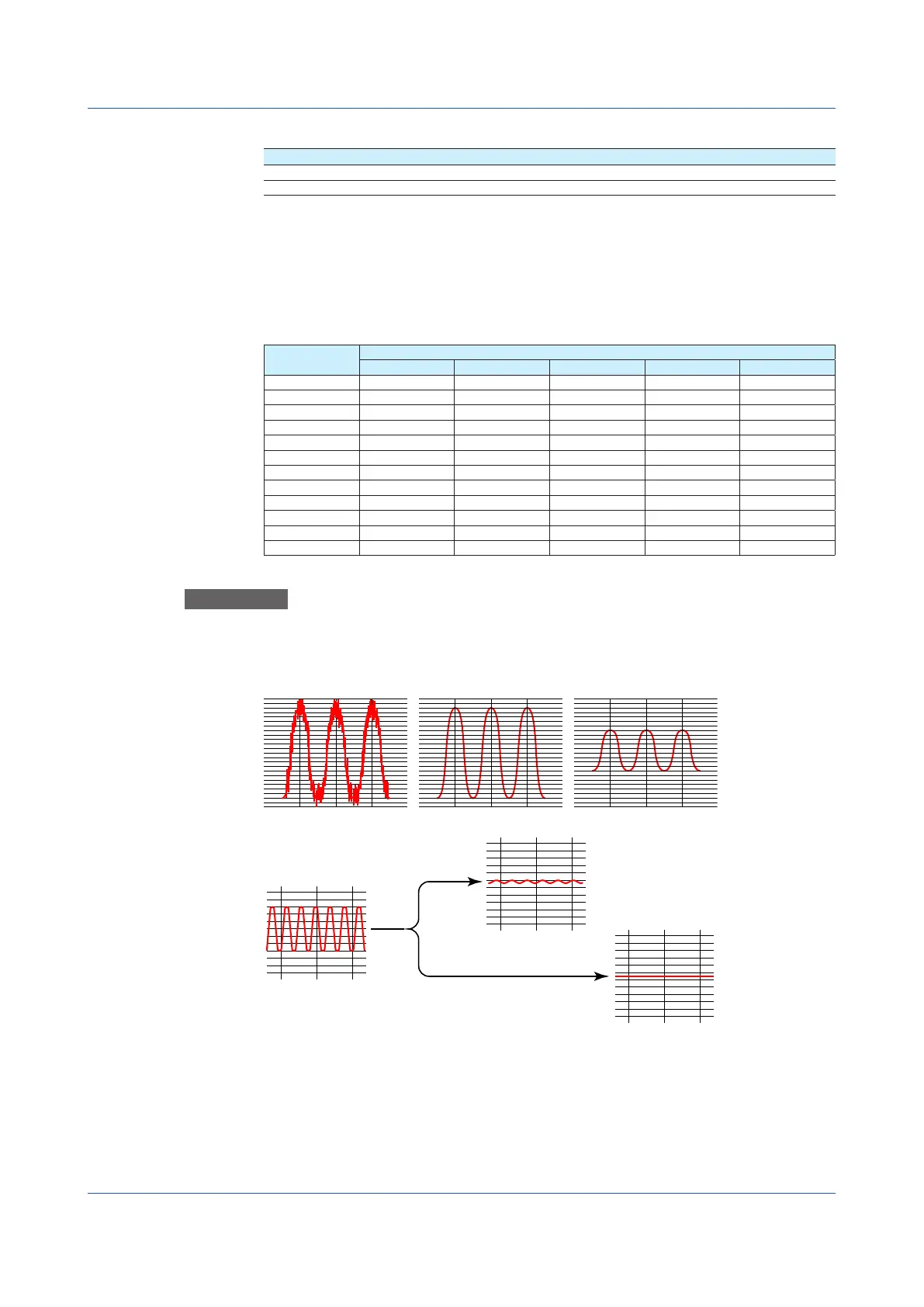1-32
IM 04L51B01-01EN
First-orderlagfilter(high-speedAImoduleonly)
Setup Item Selectable Range or Options Default Value
On/Off Off, On Off
Filter coefficient
1
3 to 300 3
1 Appears when On/Off is set to On.
On/Off
Set this to On to use the first-order lag filter.
Filter coefficient
Filter time constant = scan interval × filter coefficient N
The following table shows the relationship between filter coefficient N of the first-order lag
filter, scan interval, and time constant for filter coefficient N = 3, 10, 30, 100, and 300.
Scan interval Timeconstant(s)
N = 3 N = 10 N = 30 N = 100 N = 300
1ms 0.003 0.01 0.03 0.1 0.3
2ms 0.006 0.02 0.06 0.2 0.6
5ms 0.015 0.05 0.15 0.5 1.5
10ms 0.03 0.1 0.3 1 3
20ms 0.06 0.2 0.6 2 6
50ms 0.15 0.5 1.5 5 15
100ms 0.3 1 3 10 30
200ms 0.6 2 6 20 60
500ms 1.5 5 15 50 150
1s 3 10 30 100 300
2s 6 20 60 200 600
5s 15 50 150 500 1500
Description
When there is noise riding on the input signal, inserting a first-order lag filter has the effect of
rejecting noise. The larger the filter coefficient (time constant), the higher the noise rejection
effect. However, setting the filter coefficient too large will distort the waveform.
Actual input When the time constant
is small
is large
Input
Example when a
time constant 2-s
filter is inserted
Example when a time constant
10-s filter is inserted
1.2ConfiguringAIChannels(Analog(includingDI)input)channelsandAI(mA)channels

